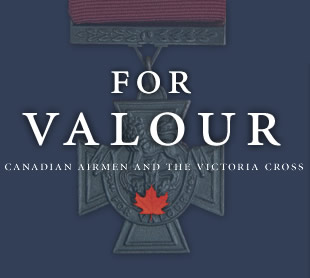Ian Bazalgette
Military Life
Ian enlisted in Britain’s Royal Artillery on 16 July 1939 and was commissioned as a Second Lieutenant the following year. He was stationed with the 51st (Highland) Searchlight Regiment of Aberdonians, who were based at the clubhouse of the legendary St. Andrews Golf Club. Second Lieutenant Bazalgette was in command of the searchlights protecting the city of Edinburgh.
Learning to Fly
In March 1941, Bazalgette went to Edinburgh and successfully enlisted with the Royal Air Force Volunteer Reserve. A few months later he was initiated into the Royal Air Force and posted to No. 22 Elementary Flying Training School in Cambridge for pilot training. Following ground school Baz’s first flight was on July 24, 1941 in a de Havilland Tiger Moth D.H. 82. Ten days later, Baz took to the air on his own for the first time. He received his RAF wings on 3 September and was assigned to Flying Training School at Cranwell’s for multi-engine training. Once completed, newly promoted Pilot Officer Bazalgette then joined No. 25 Operational Training Unit in Finningley, where he commenced his training on operational bombers.
By 18 September 1942, Bazalgette was flying Bomber Command operations with No. 115 Squadron. Some of his activities involved “gardening” – the process of dropping anti-shipping mines from an aircraft – in the North Sea from a Vickers Wellington bomber. Baz, as his fellow airmen called him, was awarded the Distinguished Flying Cross in May 1943.
Official Citation – Distinguished Flying Cross
BAZALGETTE, F/L Ian Willoughby (11831) – Distinguished Flying Cross – No.115 Squadron – Award effective 1 July 1943 as per London Gazette dated 9 July 1943.
This officer has at all times displayed the greatest keenness for operational flying. He has taken part in many sorties and attacked heavily defended targets such as Duisburg, Berlin, Essen and Turin. His gallantry and devotion to duty have at all times been exceptional and his record commands the respect of all of his squadron for his actions of late 1942, having flown many missions and survived significant enemy fire as well as a crash landing.
Piloting the Lancaster
While he did some flying in a Short Stirling bomber in late 1942, it wasn’t until early 1943 that he started regularly flying the legendary Avro Lancaster bomber. By mid-August, after a successful operational tour in Bomber Command – completing 30 operational sorties against the enemy – Baz and his crew were posted to different locations.
Much to his disappointment, Baz was sent to an Operational Training Unit (OTU) at Scotland’s RAF Lossiemouth as a Flight Commander and instructor. His stay would be short-lived, however, as higher-ups familiar with his talent – in particular Group Captain Hamish Mahaddie, a close acquaintance – helped get him back to the front lines.
On April 27, 1944, Bazalgette and his crew (picked by Baz from the senior instructors at 20 OTU) began their Pathfinder conversion course at RAF Station Warboys. Following the successful completion of the course, Baz and his crew found themselves immediately posted to No. 635 Squadron, RAF No. 8 (Pathfinder Force) Group. The force was part of Bomber Command, a long-standing offensive which lasted for more than 2000 days and four arduous years. Squadron Leader Bazalgette and his crew reported to No. 635 Squadron in May, and flew 25 operations between their arrival and the beginning of August, including D-Day activities.
The Final Mission
Baz and his crew weren’t scheduled to be part of the 4 August bombing raid of V-1 Rockets in Trossy St. Maximin, France. But a late-returning pilot (due to fog) meant Baz and his crew were now part of the mission. With their regular Lancaster (F2-M) already in action, Lancaster ND-811, F2-T (T for “Tommy”) was prepped for the crew. The group of ten Pathfinder Lancasters was to mark the target for a later, larger wave of Lancs.
The bombers encountered heavy fire, and both the Master and Deputy Master Bombers were put out of action rather quickly. Baz and his crew carried on, taking heavy flak through the starboard wing – both engines were knocked out, the fuel tanks were on fire, and bomb aimer First Lieutenant Ivan Hibbert was wounded. Despite having only the two port engines at his disposal, Baz pushed forward and managed to successfully deploy his target markers – he had to do it himself, as the bomb aimer was seriously injured.
The Lancaster then started losing altitude and spinning out of control – fuel was starting to fill the rear of the aircraft. Baz was struggling to direct the plane to an airfield somewhere near Allied ground forces when one of the two remaining port engines stopped working. Baz gave the order for the crew to jump, but knew one of his men was wounded – he didn’t know another had been overcome by smoke. Bazalgette must have known that the odds of him being able to crash-land the flaming Lancaster on one engine without sustaining serious injury or having the aircraft explode were very low.
As they floated to the ground, the four crewmen that had jumped watched as Squadron Leader Ian Bazalgette fought admirably to land the burning Lancaster in a nearby field. Baz was able to land the burning Lanc in the field but the aircraft struck a ditch and burst into flames, killing Squadron Leader Ian Bazalgette and his two wounded crewmen.











